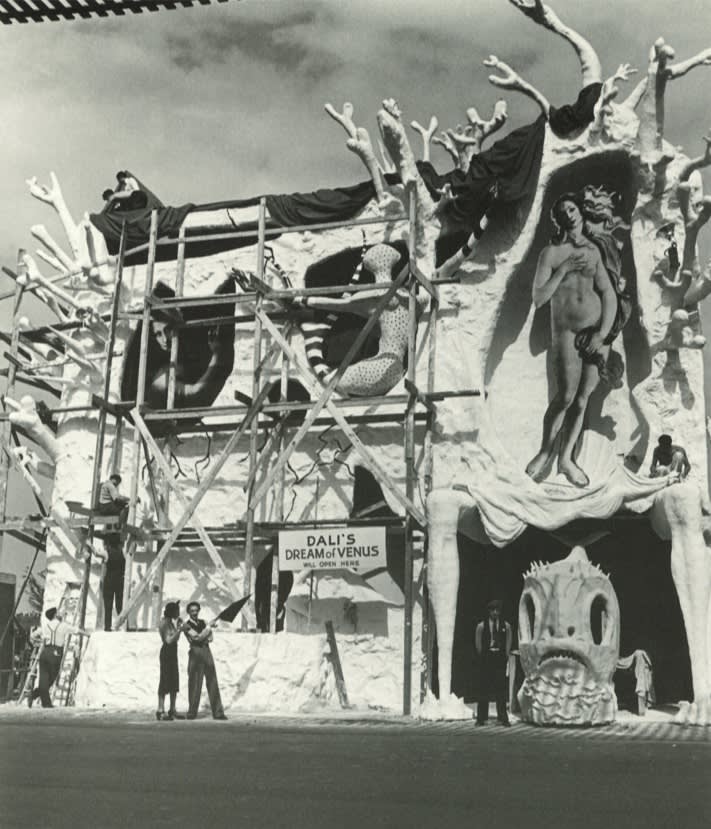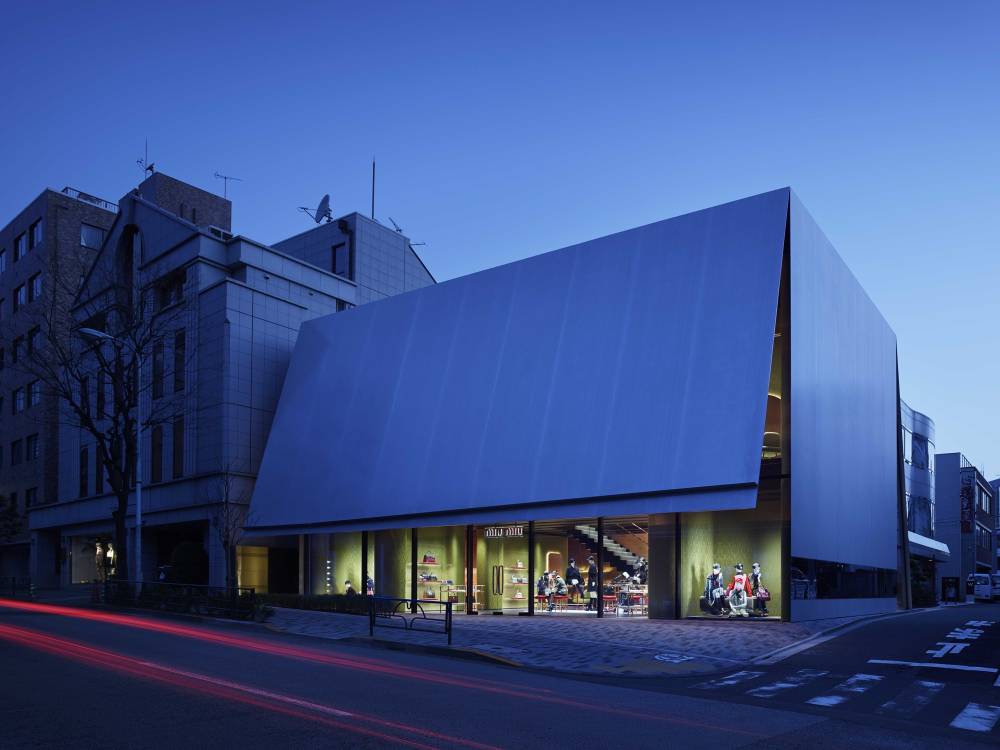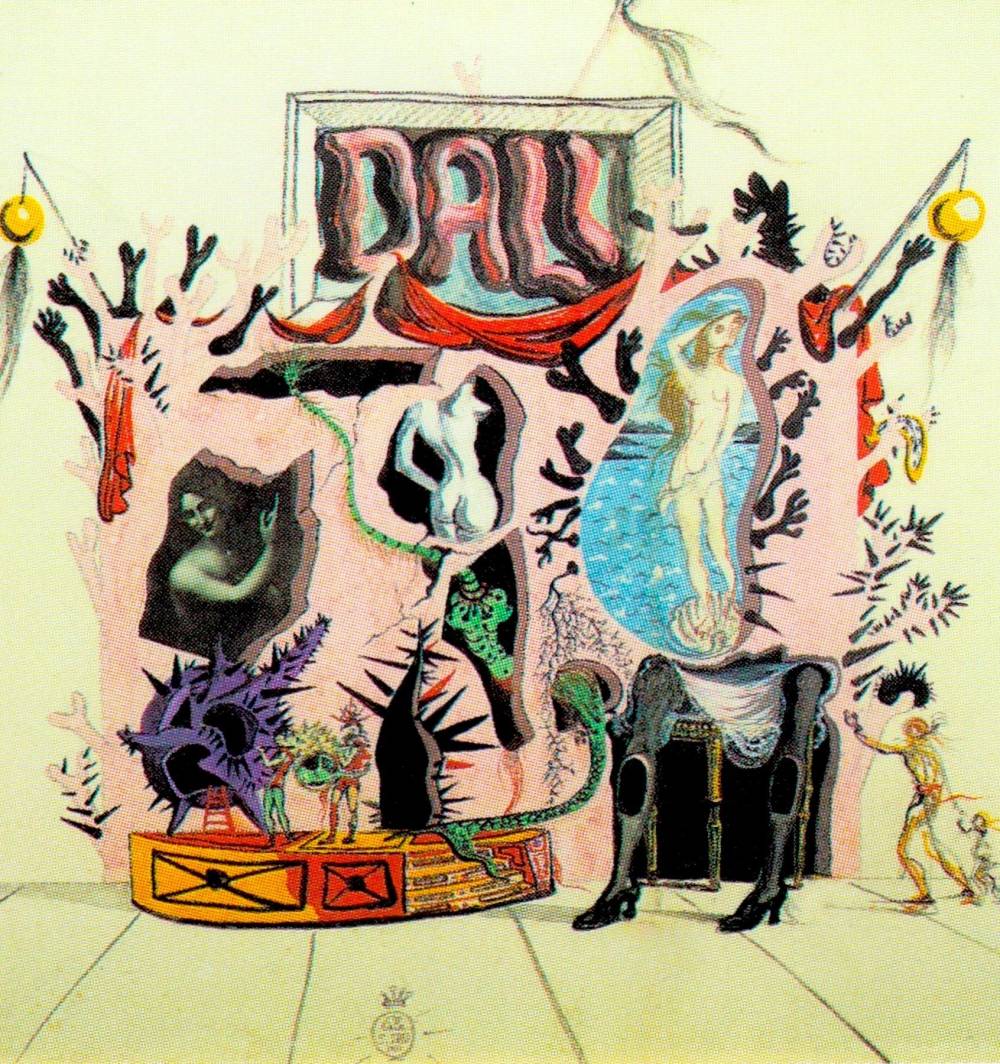
Salvador Dali
Sketch for 'Dream of Venus' Pavilion, 1939
Since its conception in nineteenth century Paris, the World’s Fair has been a symbolic exhibition of new global arts and technology. New York’s debut as host to this monumental event in 1939 was determined to be a magnificent spectacle, symbolizing an end to the Great Depression era with a vision of the future. The slogan — “The World of Tomorrow” — hints at a futuristic utopia with flying cars and impossible architecture, solidified by the massive pyramid and sphere structure, Trylon and Perisphere, that dominated the event’s promotional materials. In the amusement area, however, artists like Salvador Dali shared their eccentric and ambitious works with the masses.
Dali’s exhibition for the occasion, Dream of Venus, was created as a surrealist interpretation of a carnival funhouse. The “surrealist house” was first conceived by Julien Levy, a New York art dealer who was inspired by the 1938 Exposition Internationale du Surréalisme in Paris. The house intended to convey the core tenants of surrealism to a mass audience, combining humor and artifice with the popular fair ride and allowing surrealist artists a space for experimentation. The British textile designer William Morris was brought into the project, and eventually persuaded Levy to work solely with Salvador Dali. On April 10, 1939, the Dali World’s Fair Corporation was formed to give the Spanish artist creative autonomy. In 9 days, Dali designed the interior and facade of the surrealist house.
Salvador Dalí
Working on 'Dream of Venus'
Salvador Dalí
Working on 'Dream of Venus'
Salvador and Gala Dalí
Working on Dream of Venus
Salvador and Gala Dalí
Working on Dream of Venus
The magnificent facade, which resembled a grand sand castle, paid homage to Venus, the goddess of love, sex, beauty, and fertility, an inspiration for Dali throughout his career. The entrance was framed by a pair of exaggerated legs, above which rests a giant cutout of Botticelli’s famed work, ‘The Birth of Venus.’ Snake-like creatures slither in and out of dark chasms, where various nude forms rest with ease. Appendages grow out of the structure’s top and sides, introducing fair-goers into Dali’s dream-like surrealist world.
Salvador Dali
Entrance to the 'Dream of Venus' Pavilion, 1939
Salvador and Gala Dalí
In 'Dream of Venus' Ticket Booth, 1939
Salvador Dalí
'Dream of Venus' Façade (detail), 1939
Salvador and Gala Dalí
Exploring the ‘Dream of Venus’ Pavilion, 1939
The interior of the exhibit combines large scale wall paintings with sculptures, props, and models to introduce Venus’s dreams, with parts of the pavilion under water, from which visitors bought tickets from a fish head booth. In the first room, fair goers watch an underwater scene through a glass wall where mermaids swim around a makeshift parlor complete with a roaring fireplace, interacting with various items, Including telephones, typewriters, and a rubber casting “Piano Woman” lying across a table. The mermaids - “Living Liquid Ladies,” of which there were 17, alternate in shifts wearing Dali-designed costumes. The parlor walls open and in the distance, Mount Vesuvius erupts, transporting visitors at the scene back to Pompeii. In a bedchamber, Venus lays dreaming. A girl surfaces out of her headboard to shush guests, while a mirror appears to show Venus’s dreams, behind which a girl struggles to escape the bouquet of geraniums surrounding her head.
Salvador Dali
'Dream of Venus' Mermaid Costume Design
Salvador Dalí
'Dream of Venus' Pavilion, 1939
Continuing through the house, a corridor “gallery” with a ceiling made of hundreds of umbrellas, some with human hair dangling from them, guides guests to the final room. The gallery’s objects include a statue of a man sitting on a chair with no head and a birdcage torso filled with live birds, suitcases, and anthropomorphic lamps. The “Dream Corridor” was originally proposed before Dali was brought into the project, but Dali inserted his own ideas into the plans. In the final room is a reimagining of Dali’s ‘Rainy Taxi,’ from the Exposition Internationale du Surréalisme of 1938. A Cadillac covered in ivy is driven by a mannequin, while models sprawl readily over the car’s hood.
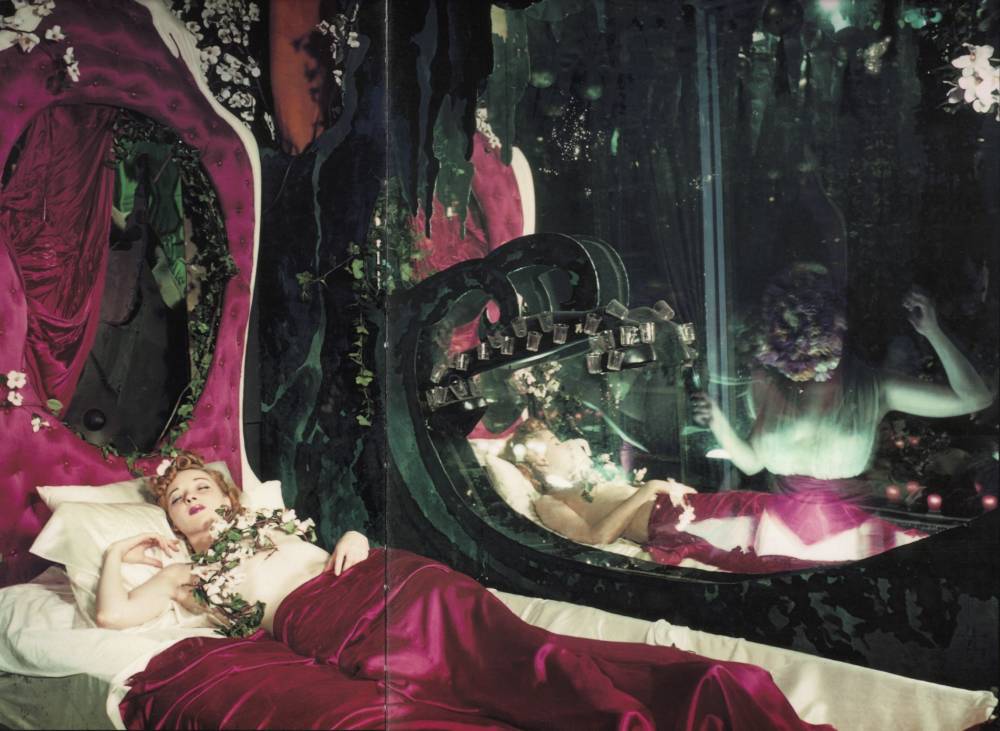
Salvador Dali
'Dream of Venus' Pavilion Interior, 1939
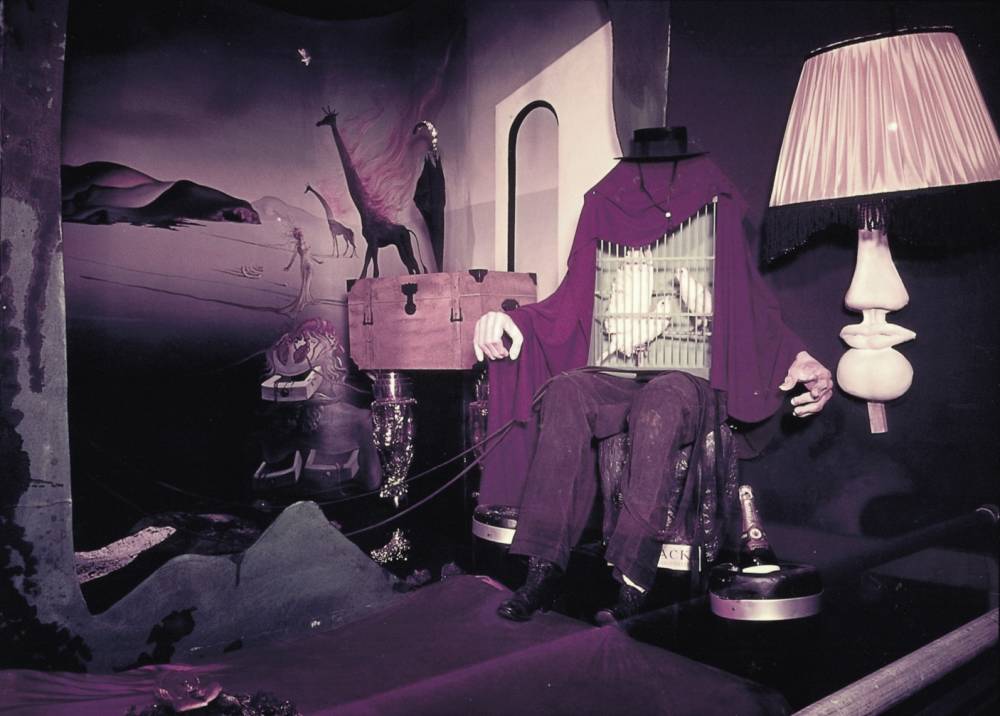
Salvador Dali
'Dream of Venus' Pavilion Interior, 1939
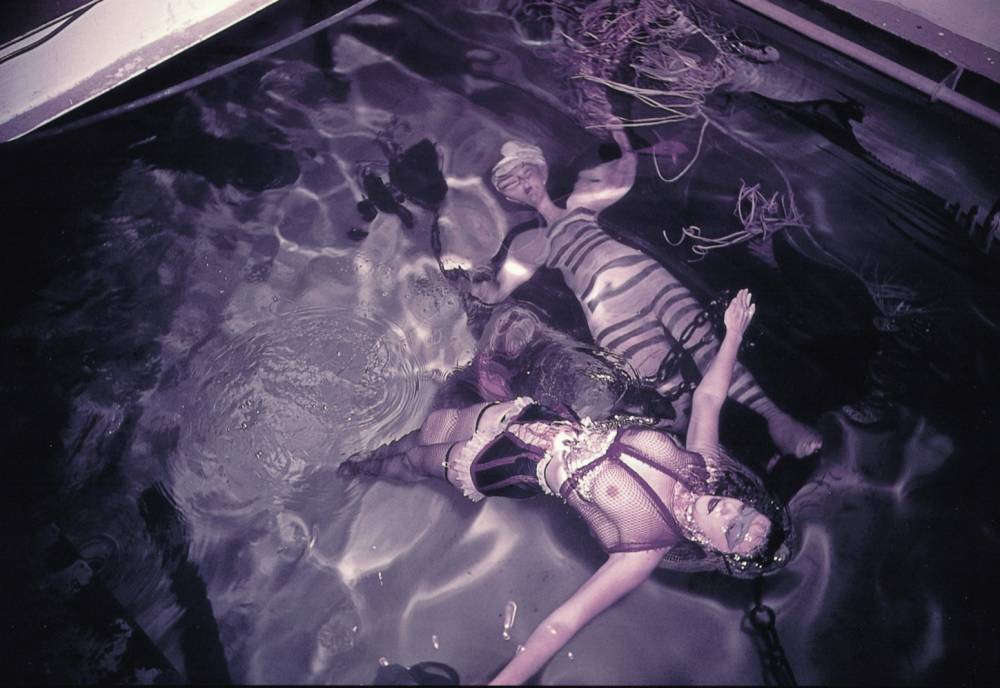
Salvador Dali
'Dream of Venus' Pavilion Interior, Mermaids in the Grotto, 1939
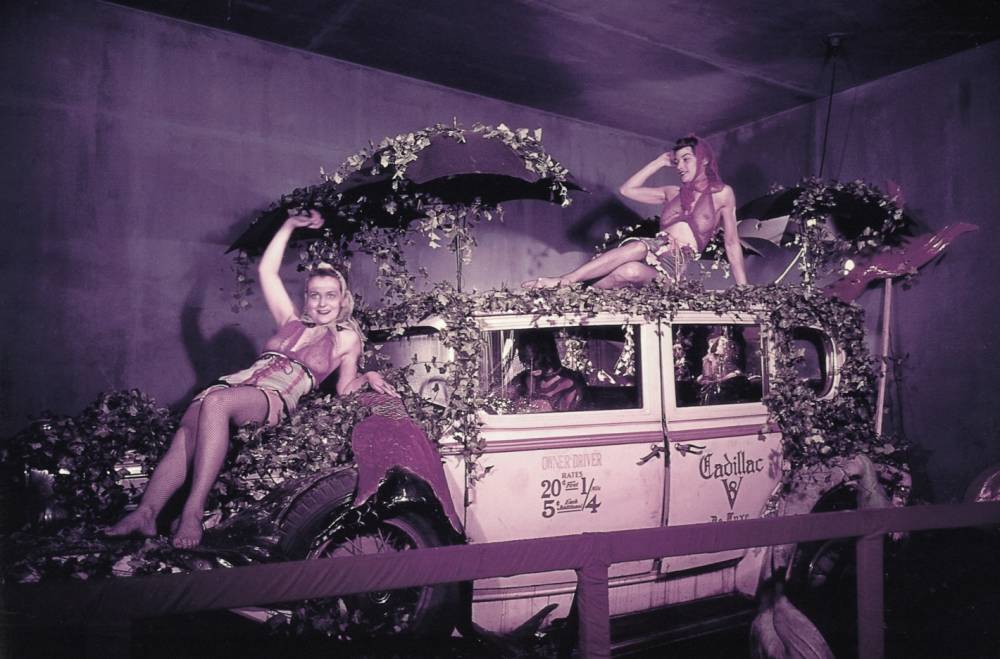
Salvador Dali
'Dream of Venus' Pavilion Interior, 1939
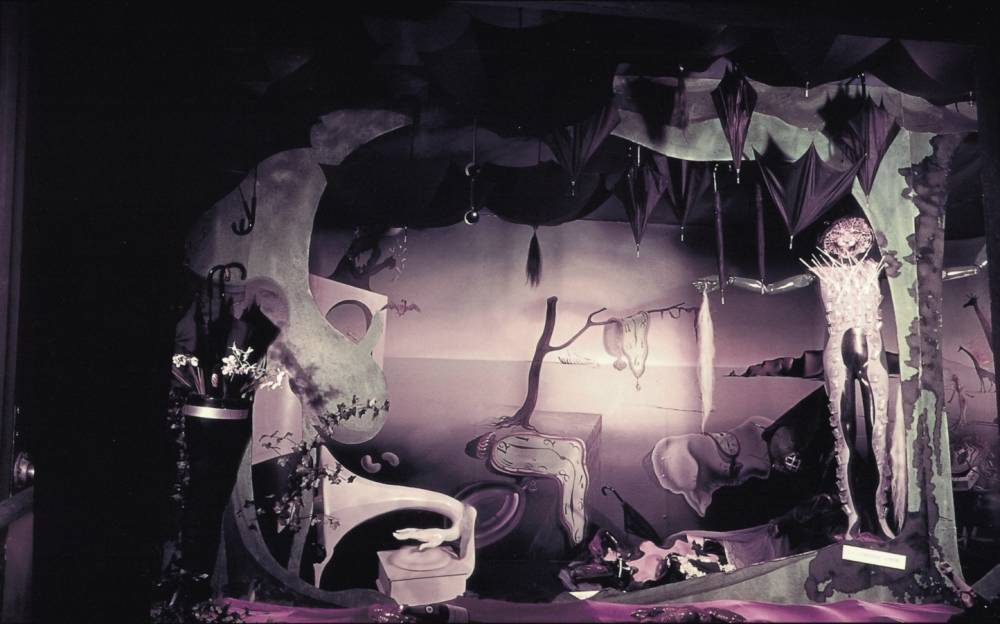
Salvador Dali
'Dream of Venus' Pavilion Interior, 1939
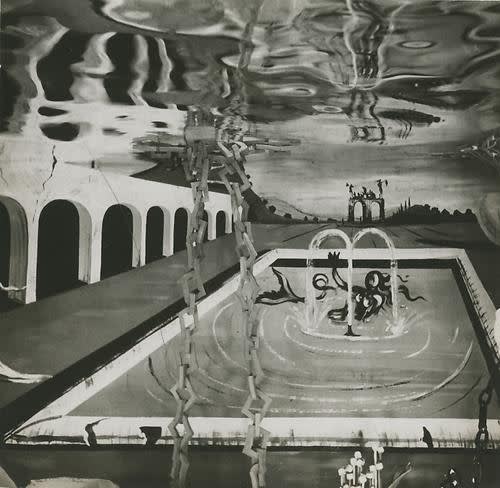
Salvador Dali
'Dream of Venus' Pavilion Sketch
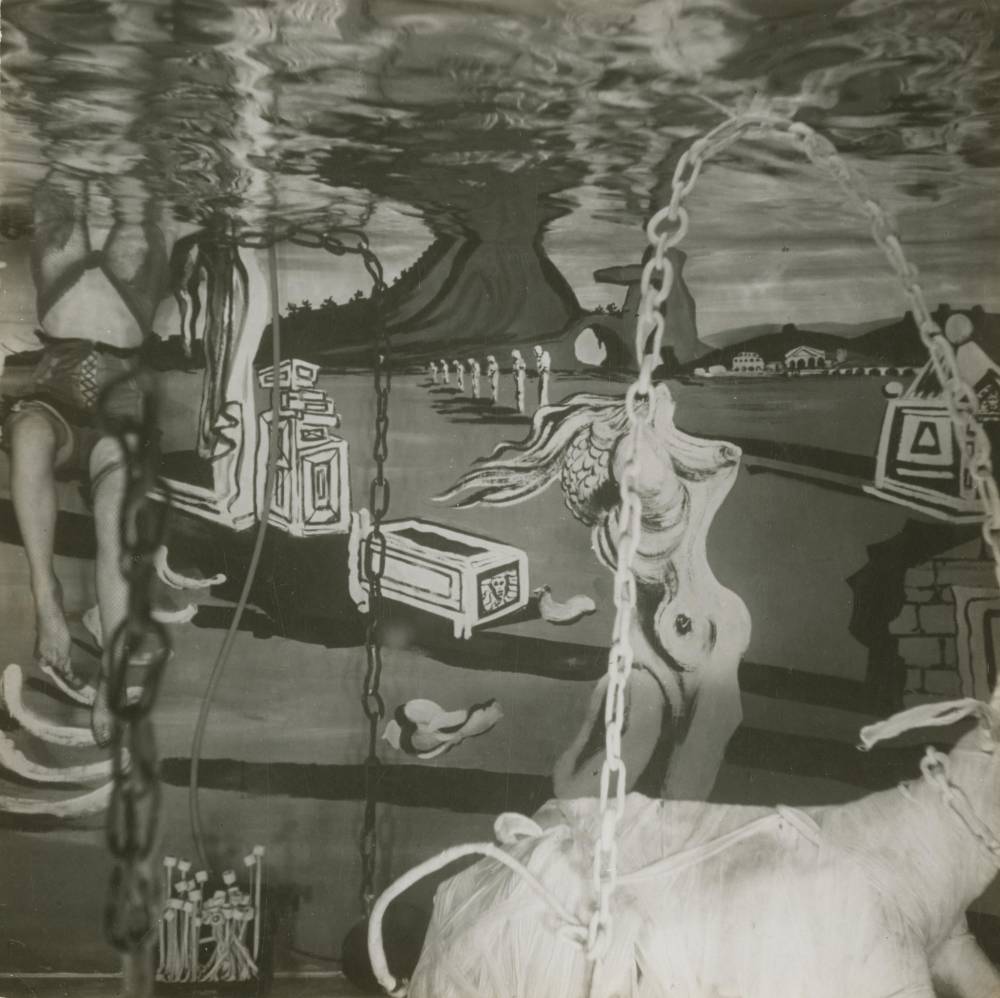
Salvador Dali
Inside the Dream of Venus pool
Dali’s Dream of Venus ran into problems with the fair’s Amusement Control Committee, which censored elements of the artist’s exhibition, which they thought to be vulgar, indecent, or offensive. Dali’s publicity photos posed a nude model as Venus, strategically placed with her legs spread over a reproduction of the World’s Fair symbol - Trylon and Perisphere, as a commentary on the fair’s censorship as well as his exhibition’s superiority. Great promotion was given to the exhibit however, including promotions on the covers of Vogue and the New Yorker in 1939 and 1940, respectively. Still, Dali retaliated against the fair’s restrictions with his infamous pamphlet entitled, “Declaration of the Independence of the Imagination and the Rights of Man to His Own Madness.”

The New Yorker
Dream of Venus Cover
Ultimately, the goal of the exhibition was to introduce the masses to the surrealist school of thought. Dali delivered an extravagant, full sensory experience that introduced visitors to a selection of the themes throughout Dali’s work, and surrealist art in general. The facade fascinated fair-goers, truly leading them into a dreamscape of Venus herself.
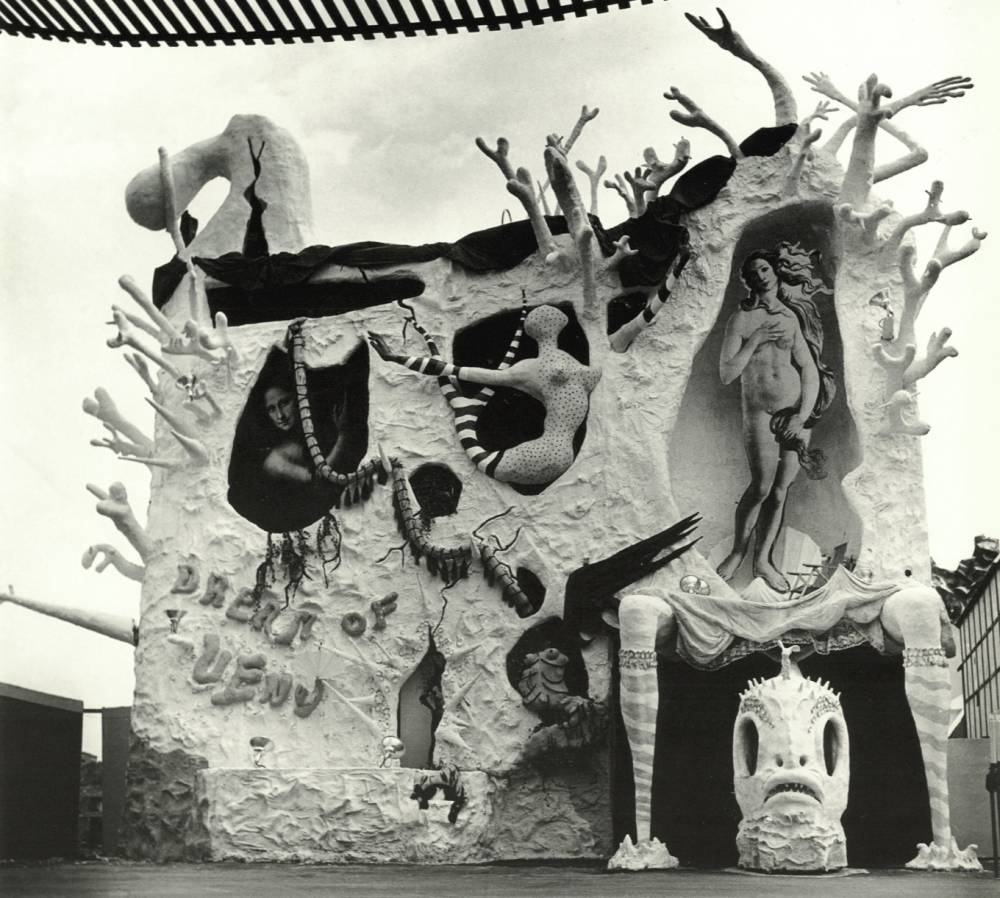
Salvador Dali
'Dream of Venus' Pavilion, 1939
